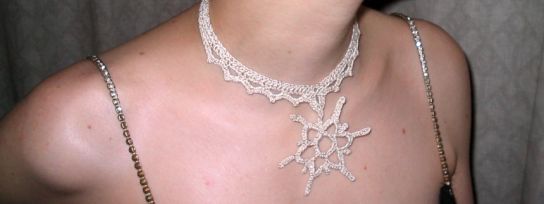Secret Method Hat Crochet Pattern
This past year has been wild! I'm renovating my flat again and have restarted my minimalist journey. I got my RYT-500 certification and have been teaching yoga (in-person and online). I got picked for this year's IKEA Live Lagom sustainability project, which has been amazing. I'm vlogging. I have lots of houseplants. One of my orchids has 3 babies, so I'm a houseplant grandma!
And guys, I know we are living in weird times, but please remember: it's not all doom and gloom.
THE PATTERN!
I am about to divulge my secret method of making top-down hats. The pattern here uses a DK weight alpaca, but you can use my secret method to crochet a hat from any kind of yarn and for any size head. You don't have to confine yourself to working in sc, either. You can try all sorts of stitches and stitch patterns once you get the hang of it. For those of you who are nervous about working without a pattern, relax. It's not as tricky and inflexible as you think. I used the same yarn in this pattern as I used in Flappy, but I didn't peek at the other pattern when I wrote this one. If you compare this pattern to the Top O' the Hat section from Flappy, you will notice that there are a few minor differences between the patterns. This doesn't mean I made a mistake making this hat, it just means that there's some flexibility with pattern-writing.
There are three ways I start top-down hats:
- Method 1. Ch 2. Work X sts into first ch.
- Method 2. Ch X, sl st in first ch to form ring. Work X sts into ring.
- Method 3. Make an adjustable loop. Work X sts into the loop, pull tail to tighten.
The second part of the hat is the increase section, which is adapted from the method of crocheting a disc in my favourite book, New Design in Crochet, by Clinton D. MacKenzie (Van Nostrand Reinhold Company, 1972). The trick is to alternate rounds of increases (e.g., work 2 sc in each st around) with rows of regular stitches (e.g., sc in each st around) according to what looks best with your yarn, hook, tension, and gauge.
At some point, you are going to stop working in a disc and start working your project into a hat shape. If you are lucky, your last round of increases will be the right size for your hat, but in many cases, you will have to space out your final round of increases (e.g., *work 2 sts in next st, sc in each of next X sts,* rep from * to * around; or *work 2 sts in each of next X sts, sc in next st,* rep from * to * around) in order to get the desired diameter. After that, work the hat in rows of regular stitches (e.g., sc in each st around) until your hat is the desired length.
The last part of my secret method is the brim. If you're an absolute beginner, you don't need to do anything fancy, but the brim is a good place to practice new stitches, stitch patterns, and color changes. The brim in this pattern, "*sc-blo in next st, sc-tbl in next st,* rep from * to * around," alternates between front-loop and both-loop sc stitches. This produces a gentle ribbing effect that is more prominent on the reverse side (which you will see when the brim is folded up).
Now that I've explained my secret method, watch it in action.Materials:
- MC: 2 skeins Inca Cloud Artesano Alpaca (100% Alpaca, 131 yds/120m per 50g skein) color 2285 (electric blue) or approximately 260 yards/240m of any DK weight alpaca
- US F / 3.75mm hook
- Stitch marker (I find a dangle earring works well in lieu of a proper stitch marker)
Finished Size:
Wee Noggin - 17.5"/45 cm circumference, 7.75"/20 cm brim-to-top
Normal Noggin - 22"/56 cm circumference, 9"/23 cm brim-to-top
Big Noggin - 26.5"/67 cm circumference, 10.25"/26 cm brim-to-top
Gauge:19 sts x 24 rounds of sc = 4"(10 cm)
Notes:
Special stitches
sc-blo: single-crochet, back-loop only (instead of working the sc through both loops, work the sc through the back-loop of the stitch).
sc-tbl: single-crochet, through both loops. This is just a regular sc, but it is used to eliminate confusion when alternating between sc-blo and sc.The Hat
All sizes
Round 1: Work 10 sc into magic loop, pull tail to tighten. (10 sts)
Begin crocheting in a spiral. To help keep track of rounds, place a stitch marker in the first stitch of the round to mark the beginning of the round. Move the marker up as your work progresses.
Round 2: Work 2 sc in each st around. (20 sts)
Rounds 3-4: Sc in each st around.
Round 5: Work 2 sc in each st around. (40 sts)
Rounds 6-10: Sc in each st around.
Round 11: Work 2 sc in each st around. (80 sts)
Wee Noggin Only
Rounds 12-27: Sc in each st around.
Rounds 28-40*: *Sc-blo in next st, sc-tbl in next st,* rep from * to * around.
Sl st in next st. Fasten off.
Normal Noggin Only
Rounds 12-17: Sc in each st around.
Round 18: *Work 2 sc in next st, sc in each of the next 3 sts,* rep from * to * around. (100 sts)
Rounds 19-35: Sc in each st around.
Rounds 36-50*: *Sc-blo in next st, sc-tbl in next st,* rep from * to * around.
Sl st in next st. Fasten off.
Big Noggin Only
Rounds 12-18: Sc in each st around.
Round 19: *Work 2 sc in next st, sc in next st,* rep from * to * around. (120 sts)
Rounds 20-43: Sc in each st around.
Rounds 44-60*: *Sc-blo in next st, sc-tbl in next st,* rep from * to * around.
Sl st in next st. Fasten off.
* By all means feel free to adjust the number of rows to your preference if you want a taller or shorter hat! The number of rounds given is enough for a hat with a folded brim (as pictured).
Finishing
Weave in all ends. Fold up brim.
Use the rest of the yarn to make a pom-pom. (Large size may require an additional skein of yarn, though you could mix in a different yarn if you want to get a little crazy. It's your pom-pom, after all.) For particularly large pom-poms, like the one pictured, use 100% cotton yarn to tie the pom. Cotton is strong and does not tend to stretch or break so your pom-pom will be more secure.
Note: Here's a very good pom-pom tutorial.



Comments
Post a Comment